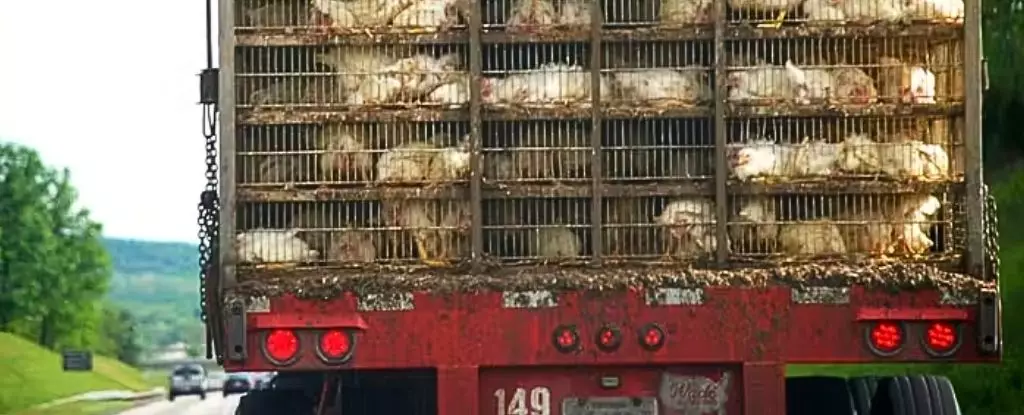When it comes to threats to global health, few are as ominous as H5N1, the avian influenza virus that poses a significant risk of crossing over from animals to humans. While there have only been a little more than 900 reported human cases since 2003, the fatality rate of these infections—nearly 50 percent—makes it startlingly clear that if H5N1 ever achieves efficient human-to-human transmission, the repercussions could be catastrophic. The warnings about this virus are not just medical alerts; they are urgent calls to action for governments, healthcare institutions, and individuals. Instead of sleeping easy under the delusion that our lives are immune to such viruses, it’s prudent to engage critically with this lurking peril.
The Evolutionary Terrain: Nature’s Deadly Gamble
At the heart of the H5N1 threat is a complex interplay of evolutionary biology and anthropology. H5N1 is evolving incrementally as it navigates from animal to human hosts, engaging in a biological game of chance that could change the course of human history. Spillover, a process requiring the pathogen to adapt its molecular keys to fit the locks of human cells, makes the situation both dangerous and unpredictable. The reality is harsh: pathogens often become thwarted halfway through this evolutionary process. In certain instances, infections may occur, but they lack the necessary efficiency for sustained human-to-human transmission. With the aggressive pace of influenza viruses, however, the possibility remains that these barriers could crumble.
The stakes are especially unnerving when you consider that H5N1 has already infiltrated over 450 different animal species. Each of these animal interactions serves as a breeding ground for new variants, reinforcing the notion that the viral chatter—those sporadic human cases entwined with animal outbreaks—could eventually spiral into a widespread epidemic. Society’s immovable focus on economic well-being often trumps the urgent health considerations linked to the management of animal populations and agriculture, and this neglect may yield perilous consequences.
The Role of Agriculture: A Call for Change
From a center-left liberal perspective, the need for institutional reform in agricultural practices is immediate and critical. To mitigate the risk posed by H5N1, governments must prioritize comprehensive regulation on how we raise and transport poultry. The sheer scale of the poultry industry far outweighs wild birds, indicating that current systems of production and movement are inadequately controlling viral spread. Rearranging our agricultural practices and reducing the scale of concentrated animal feeding operations may not only curb H5N1 evolution but also enhance biodiversity, which plays a significant role in controlling disease outbreaks.
It’s not merely a matter of health; it’s an ethical call to treat the world’s animals with greater dignity. The practices that facilitate pandemic conditions aren’t merely byproducts of nature; they are largely dictated by human behavior. If the urgency of the situation can’t inspire reform in the very infrastructure that sustains animal husbandry, then what will it take?
Individual Responsibility: A Lifeline to the Future
While institutional reform is paramount, individuals must also take responsibility for their own well-being and, by extension, the well-being of society as a whole. Vaccination against seasonal flu viruses can offer essential protection. People may underestimate how vaccinating against common strains can mitigate the risks associated with avian flu, but this simple act can diminish the likelihood of mutations that facilitate human transmission. Each person’s decision not only reflects personal health choices but also societal duties that have far-reaching implications.
Engagement in this health challenge also means advocating for improved public health measures, focusing on nutrition and sanitation in impoverished communities. History confirms that better nutrition can significantly bolster immunity, while enhanced sanitation can limit exposure to pathogens. In a world interconnected like never before, we cannot afford to ignore that issues originating in one community can ignite widespread crises elsewhere.
Thinking Long-Term: An Imperative Shift
Looking at emerging infections through a long-term lens, it becomes clear that human behavior has stark implications on the trajectories of infectious diseases. With our understanding of this concept, individual and collective campaign strategies can evolve toward effective stewardship of our health futures. The stark warning of H5N1 should serve as an opportunity—to foster innovation, enhance public awareness, and reshape the way society interacts with pathogens. Nations must come together, share expertise, and act upon shared knowledge rather than be complacent amidst the chaos of unpredictability.
The urgency surrounding H5N1 isn’t a distant threat; it’s a clarion call—a chance to rethink how we engage with the world’s wildlife and our health. Only through proactive cooperation can we hope to stave off the unthinkable.


Leave a Reply